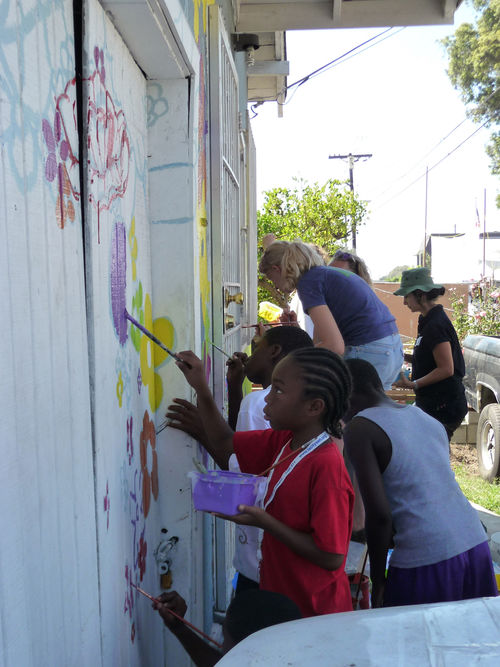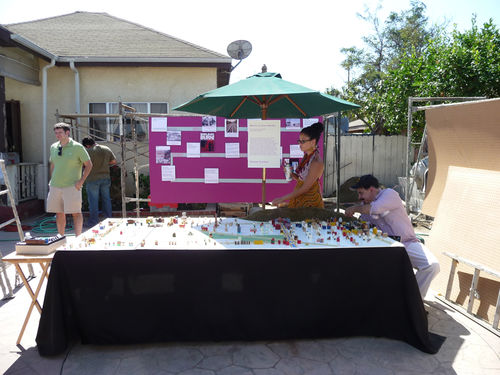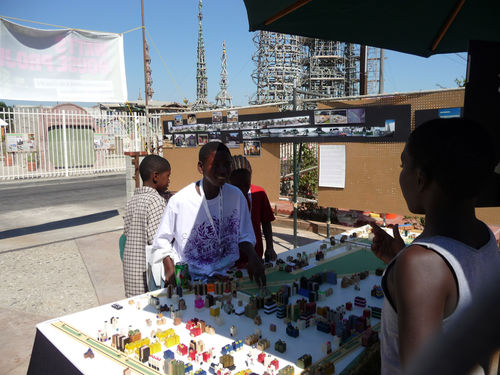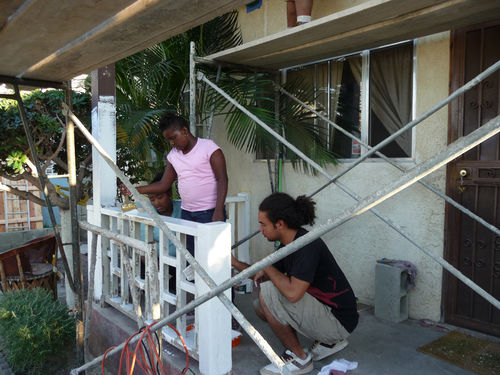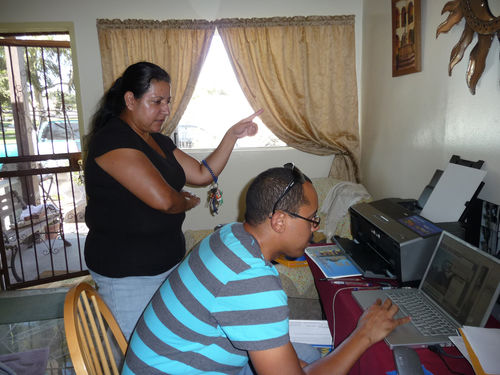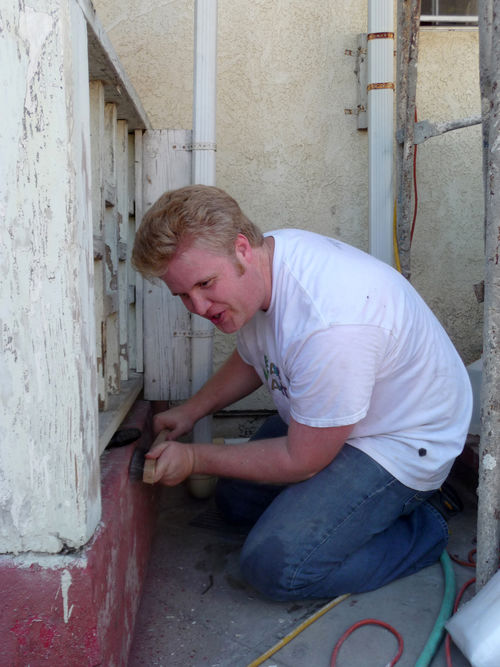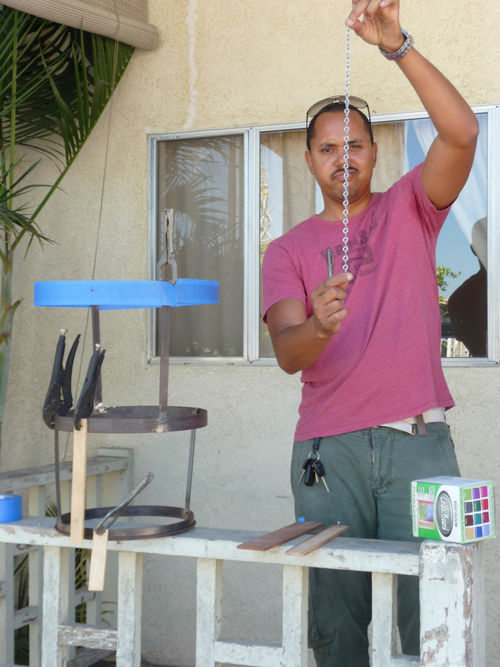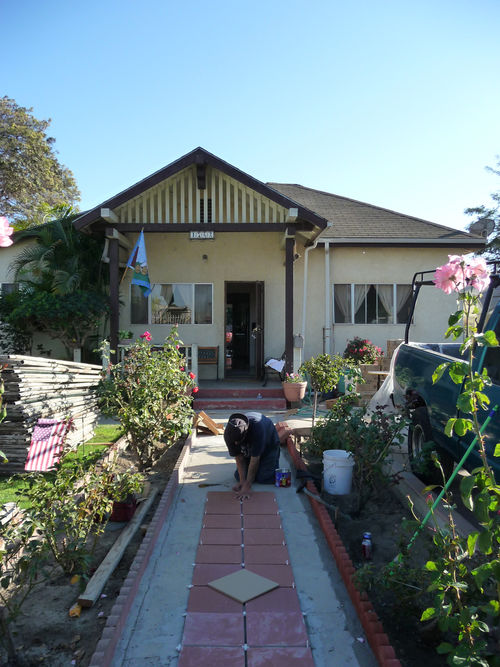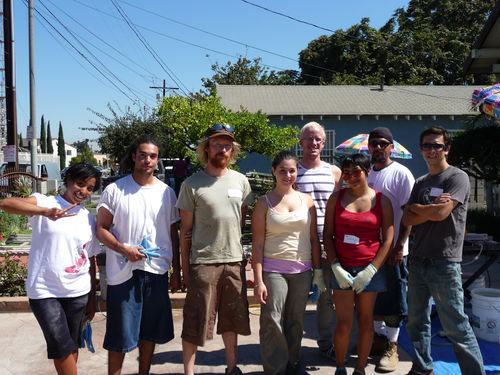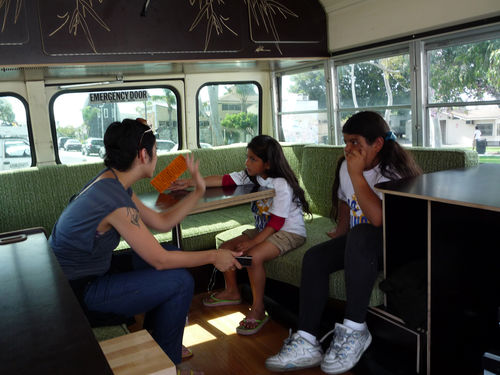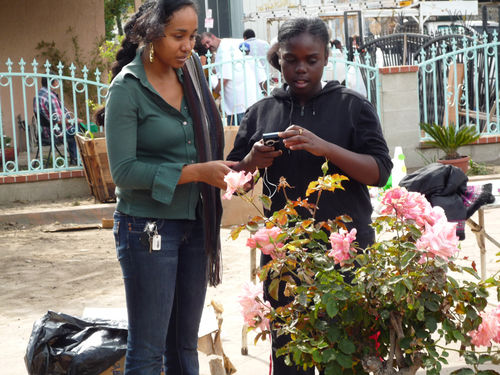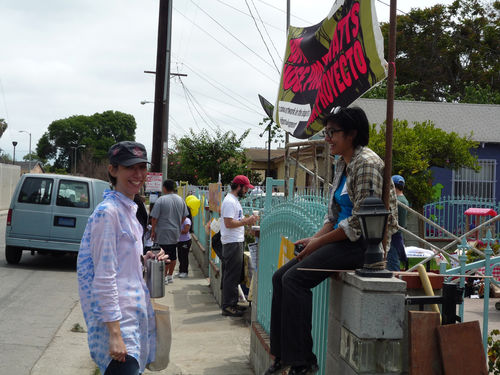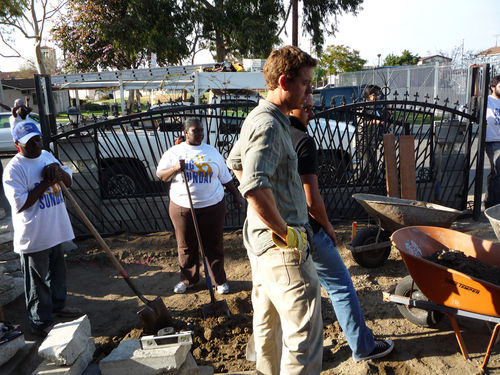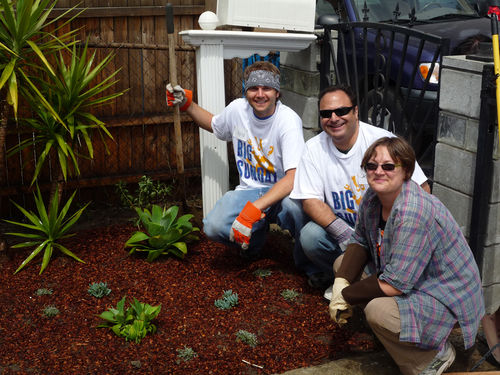
Edgar Arceneaux
Watts House Project
Through the Hammer Museum’s Artist Residency Program, Los Angeles–based artist Edgar Arceneaux launched an ambitious long-term project called the Watts House Project (WHP) and completed the first of twenty residential property enhancements in the Watts neighborhood, just across the street from the historic Watts Towers landmark. Invested in the notion that residents can be empowered to creatively shape their own space and community, WHP facilitates the collaboration of an artist, an architect, and a homeowner on each property. The overall coalition of design professionals, artists, university students, volunteers, and residents catalyzes a reimagining of the neighborhood as an enclave where creativity is evident in the very architecture and design of the homes themselves. Some of the architects and artists who have collaborated on the project thus far include Francisco Arias, Tanya Aguiñiga, Ed Pine Stevens, Carolyn Castaño, Alexandra Grant, Mike Niemann, and Katie Bachler. After the initial property enhancements, Watts House Project aims to address longer-term issues that face the larger Watts community, including housing and community support structures, but bases these larger goals on the evolving needs and concerns of the residents themselves.
Arceneaux’s residency, which spanned September 2008 to June 2009, marks an innovative approach to the museum residency, reflecting the Hammer’s openness to risky and process-based nontraditional art practices. Rather than initiating a “parachuting approach” to community outreach by pairing an outside artist with an underserved community for a short-term project (that may or may not address the needs of that community), the Hammer partnered with an artist already engaged in rigorous community-based work. Because of the museum’s relationship with UCLA, a wide range of students, from MFA students to undergraduates in art and art history, have participated in volunteer days and special internships on the project. The Hammer has expanded on this interest in rigorous community art practice and a larger critical dialogue about social practice through the workshop “Art and Community Engagement,” in which the Watts House Project was a featured case study.
Arceneaux describes the project as an experimental, dynamic space in which process drives content: “The objects, aesthetic enhancements, and systems that arise out of this project are merely effects. The true artwork is the collaborative social sculpture at the center of Watts House Project.” In a way, this project is no different from the art-making process in general for Arceneaux: though Watts House Project does have goals and principles that guide it, it remains flexible and responsive by design. “The process is reflexive,” he explains. “You do something, and you let the work talk back to you.”
Arceneaux’s Hammer residency began with a Watts House Project launch event on September 27 and 28, 2008, which brought together supporters and community members from across Los Angeles. The center of activity was the Madrigal family home (1762 East 107 Street), with an outdoor exhibition, participatory planning workshop by James Rojas, and volunteer activities all occurring on the property. The outdoor exhibition, set up on the Madrigal driveway, featured photographs from the earliest Watts House Project initiatives in the mid-1990s, an historical timeline of Watts, and about 25 imaginative, playful proposals from Los Angeles–based artists as a part of the virtual redevelopment project. These proposals reimagined houses on the block, and several of them (including Castaño’s floral mural design and Grant’s “Love” sculpture) later served as points of departure for realized projects. The launch event coincided with the Watts Towers Jazz and Drum Festivals, and the festive weekend spun off eddies of continuing activity and engagement in the neighborhood.
The Hammer Museum’s Artist Residency Program was initiated with funding from the Nimoy Foundation and is supported through a significant grant from the James Irvine Foundation.



